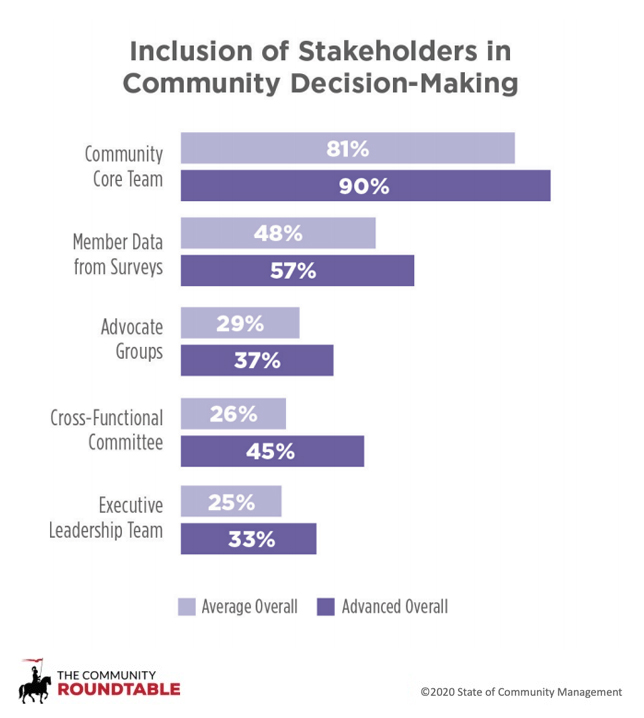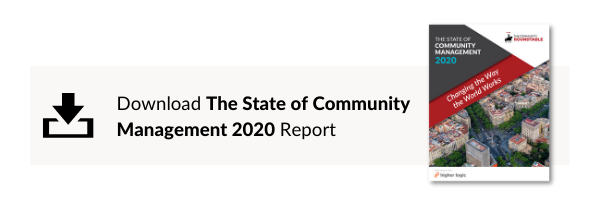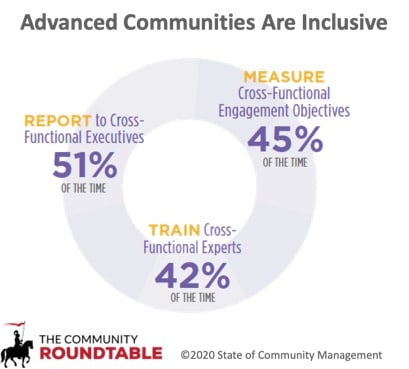
Inclusion is a critical focus for most organizations and has been particularly prominent over the past few months. Online communities are uniquely suited to promote wide-scale inclusion because of their collaborative rather than directive structure—they reward members for their unique contributions instead of forcing compliance to a standard. Communities are also generative, producing more value for every participant than is contributed by them—delivering a compelling ROI for every member. But the best communities don’t just assume that their existence will immediately foster widespread inclusion; instead, they prioritize investment in operations that will institutionalize inclusion.
When we asked members of TheCR Network for specific responses on how their community promotes inclusion, three methods stood out.
- Validating Concerns – One community manager received concerns from members about a lack of female speakers in a large annual conference his organization holds. He investigated and found that 15 to 18 percent of speakers were female and that this number was in line with similar conferences in his industry, but he didn’t stop there. Looking deeper he discovered that the percentage of female speakers was not representative of female members in his community, so he reached out to his community and they created a five-step plan to make their conference more inclusive.
- Making Inclusion Visible – One of our members noted that while they still have much to do, they created a code of conduct, which is accessible to the entire organization, and an inclusive holiday calendar that allows for community members to discuss inclusive movements like Pride. Her community also marks moderators and admins so members of the community have clear pathways to report concerns. She is also working to recruit a more diverse cohort of customer advocates, formalize welcoming procedures for new members, and even implement slackbot to combat the word “guys” in their Slack channels. All of these measures make the importance of inclusion visible, daily.
- Providing Inclusion For Everyone – A member in a large organization brought up the importance of seeing inclusion everywhere. One of her community’s biggest diversity issues is age. Her community often feels curtailed for older generations, and it’s common for younger employees to feel their ideas are not important. While her organization is working towards BIPOC and LGBTQ+ inclusion, ageism was overlooked. Her community has since developed a multi-tiered incident response plan with a section dedicated to HR. They have also set up a number of filters to pick up word usage that might indicate exclusive behavior. Clubs that cater to a younger audience are being developed, even when there is push back from older committees; the community channels allow for discussion and eventual approval.
These sorts of solutions cannot exist without the inclusive culture that well-functioning communities bring. Institutionalizing inclusion requires public progression and admitting openly that there needs to be change. This sort of acknowledgement demonstrates to community members that their organization validates concerns and that inclusion is lived, not just communicated. Advanced communities show that this is achieved best when community governance is highly integrated across organizational leadership as well as across emergent community leadership. When more voices ask questions and provide answers, holes in inclusion practices can be identified and addressed faster.
This year the State of Community Management research shows that communities are more effective when they engage with more constituencies. Communities that do this best are those with roadmaps, dedicated budgets, and advanced strategies. They can calculate value and report it, and they empower their members to be actively engaged and innovative. None of this success could be achieved without inclusion, and all of the measures that lead to this success promote it. This generative nature changes culture, promoting a culture of equity in voice and experience.



